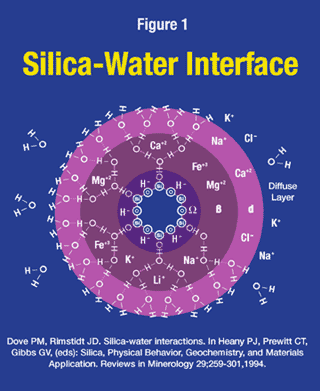A Silicate Mineral Supplement,
Microhydrin®, Traps Reduced Hydrogen
Providing In Vitro Biological Antioxidant Properties
Introduction
 It was the purpose of this investigation to study the effects of the reduced hydrogen silicate mineral towards several standard procedures that would indicate its antioxidant properties (reducing potential) in biological molecules. Since the silicate mineral supplement analog is saturated with reduced hydrogen and provides reducing potential in water of approximately -650 mV, a study was undertaken to observe oxygen free radical scavenging ability using several methods reported in the current literature. It was also analyzed for the ability to act as a reducing agent (antioxidant) in several standard assays (direct reduction of cytochrome c and NAD+).
It was the purpose of this investigation to study the effects of the reduced hydrogen silicate mineral towards several standard procedures that would indicate its antioxidant properties (reducing potential) in biological molecules. Since the silicate mineral supplement analog is saturated with reduced hydrogen and provides reducing potential in water of approximately -650 mV, a study was undertaken to observe oxygen free radical scavenging ability using several methods reported in the current literature. It was also analyzed for the ability to act as a reducing agent (antioxidant) in several standard assays (direct reduction of cytochrome c and NAD+).
Hydrogen
Hydrogen is vital to life processes because of its unique atomic structure. It is one of the most important elements donating an electron, an electron pair or its proton to reduction/oxidation (redox) reactions of numerous enzymes and intermediates within metabolic pathways throughout the cell. Numerous biochemical reactions depend on nicotinamide adenine dinucleotide (NAD, NADH) and flavin adenine dinucleotide (FAD, FADH, FADH2) and their respective reduced forms for hydrogen electron transfer. Final transfer of electrons provided by hydrogen occurs in the energy cycle during the breakdown of glucose through glycolysis, the citric acid cycle and the mitochondria respiratory electron transfer (transport) chain (11) (Figure 5).
Hunza Water
The Ultar Glacier of Hunza, West Pakistan has received interest in this century by both geologists and medical professionals as to the unique association towards unusual health and longevity of the people who consume the glacier stream water (4-7). Research has revealed that drinking the glacially pulverized rock flour of the Hunza river, eating a favorable diet, and community participation have been critical factors in achieving renowned longevity, a low rate of heart disease, and exceptionally good to excellent health in this community (4-7).
In analyzing the correlation to health and the use of glacial waters, it is apparent that not only do glacial waters have an abundance of important trace minerals but also the amorphous silicate derivatives themselves have unique characteristics in their ability to structure water and transport minerals and electrolytes (1,8,9). Although the structural studies are complex as to the kinetics of the silanol (SiOH) groups formed in different silica (SiO2) complexes, the initial adsorbed water adjacent to the surface is oriented and has properties (e.g., entropy, mobility, and dielectric constant) different from those of bulk water (1).